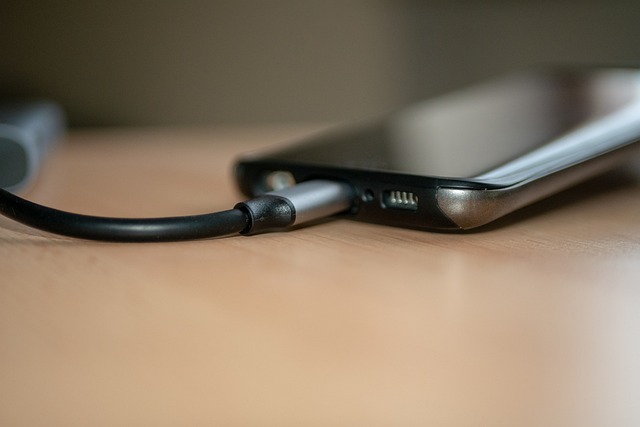The Hidden World of USB-C: More Complex Than You Think
The humble USB-C port that adorns modern laptops, smartphones, and tablets harbors complexities far beyond its unassuming appearance. While consumers see a universal connector promising simplicity, engineers and manufacturers navigate an intricate maze of standards, power profiles, and compatibility challenges. The reality of USB-C involves hidden protocols, inconsistent implementations, and market fragmentation that impacts everyday technology users. The small reversible port that was meant to unify connectivity has paradoxically created new layers of complexity that most consumers never see.

Behind the deceptively simple connector
USB Type-C was supposed to be the answer to our connection woes—a single, reversible connector to replace the myriad of cables cluttering our desks. Yet beneath this sleek exterior lies a bewildering ecosystem of standards and specifications. The connector itself supports multiple protocols: USB data transfer (at various speeds from 2.0 to 4.0), DisplayPort, HDMI via adapter protocols, audio, and power delivery ranging from trickle charging to 240W. This versatility, while impressive on paper, has created a troubling situation where identical-looking cables can perform drastically different functions with no visual indication of their capabilities.
The confusing world of USB-C power delivery
Power delivery represents one of the most convoluted aspects of the USB-C ecosystem. The original USB Power Delivery specification has evolved through multiple versions, with the latest supporting up to 240W—enough to power gaming laptops and monitors. However, this creates a situation where consumers must decipher cryptic markings or packaging to determine if their cable can deliver 15W, 60W, 100W, or more. Many manufacturers complicate matters further by implementing proprietary fast-charging technologies that only work with specific charger-device combinations, creating an ecosystem where your phone might charge at lightning speed with its included cable but crawl along with seemingly identical third-party options. The market price for these cables varies wildly from $5 to $40 with little external indication of quality or capability.
Protocol confusion and compatibility nightmares
The versatility of USB-C extends beyond power to data transfer and display capabilities, creating additional layers of complexity. A single USB-C port might support Thunderbolt 3 or 4, USB 3.2 Gen 1, Gen 2, or the newer USB4—each with dramatically different bandwidth capabilities. Some ports support video output through DisplayPort Alt Mode or Thunderbolt, while physically identical ports on different devices might not. This has created a market where expensive docking stations often don’t work as expected across different laptops, and consumers must become amateur technicians to decipher compatibility charts before making purchases. The price premium for fully-featured USB-C devices with complete compatibility can reach hundreds of dollars compared to their limited counterparts.
The market fragmentation problem
The implementation challenges of USB-C have led to significant market fragmentation, with manufacturers taking widely different approaches to port functionality. Apple’s MacBooks offer limited ports but with full functionality, while many Windows laptop manufacturers provide more ports but with variable capabilities. Some manufacturers save costs by implementing USB-C ports that look identical but have dramatically different internal capabilities, even on the same device. This inconsistency extends to mobile devices, where some Android phones support video output and others don’t, despite having identical connectors. The resulting ecosystem forces consumers to navigate spec sheets with PhD-level attention to detail before making purchasing decisions.
The labeling and education gap
Perhaps most frustrating is the lack of standardized labeling and consumer education surrounding USB-C capabilities. While the USB Implementers Forum has created logos and labels for different speeds and power capabilities, their implementation remains inconsistent across products and packaging. Cables that support high-power charging don’t always indicate their maximum wattage, and those with high-speed data capabilities often lack clear speed ratings. This education gap has created a market where consumers frequently purchase cables that don’t meet their needs, leading to slower charging, failed connections, and device compatibility issues. The cost of this confusion isn’t just financial—it results in technology that functions below its potential and creates unnecessary electronic waste as consumers replace incompatible accessories.
The future of connection standards
Despite these challenges, the industry continues to evolve the USB-C standard, with USB4 promising to unify some of the fragmented features. The newer specification incorporates Thunderbolt 3 compatibility, mandatory USB Power Delivery support, and simplified video output options. However, the transition period will likely see even more confusion as new and legacy devices coexist in the market. For the average consumer, the seemingly simple USB-C port will continue to hide complexities that impact daily technology use. Understanding these hidden aspects of USB-C helps explain why the universal connector hasn’t fully delivered on its promise of simplifying our digital lives, instead creating a new class of compatibility challenges that many users never anticipated from what appears to be a standardized connection.





